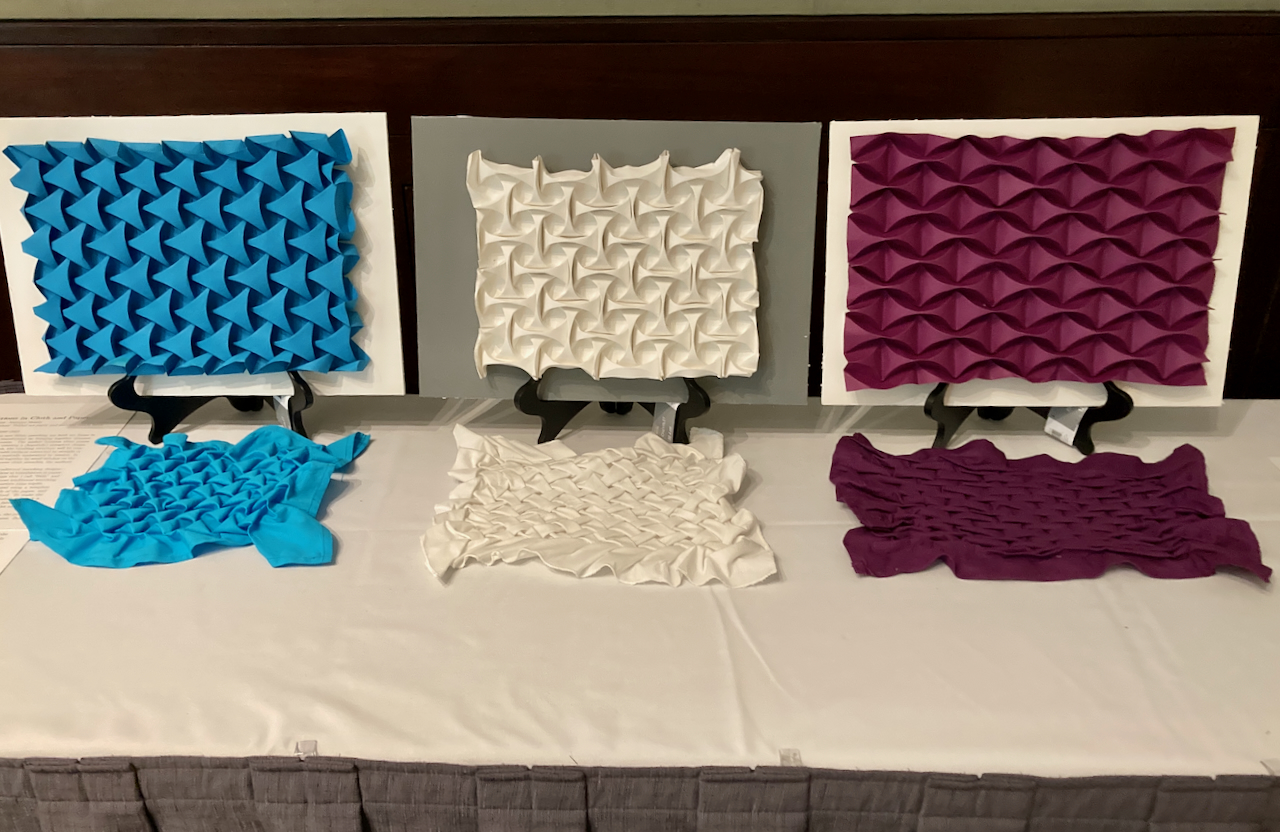Tessellations in Cloth and Paper

Designer and Artist: Jeannine Mosely
Materials and Methods: Folded art paper and smocked cotton fabric with thread
Years of Creation: 2005--2022
Origami tessellations and fabric smocking are both art forms in which a flat surface is transformed by bringing together symmetrically chosen tuples of points. The surface between these points is distorted by this action, creating a (hopefully) attractive design. Because paper doesn't stretch, the resulting structure will be composed of a collection of developable surfaces connected by straight or curved creases. The structure is typically maintained by tension. In smocking, the point tuples are held together by small stitches on the back side of the fabric. Because woven cloth stretches, the surfaces between the points drape fluidly.
In this exhibit, I have taken two traditional smocking designs---Lattice and Lozenge---and re-imagined them as tessellations in paper. I have also taken an original origami design that I call "Sails" and reworked it as a smocking pattern. While most traditional smocking patterns join only pairs of points, the Sails pattern joins triples.
The curved origami tessellations were created using a template to trace the crease pattern onto the reverse side of the paper, and then scoring along the lines with an embossing tool. To make the traditional smocked pieces, I used a "smocking ruler" to mark a rectangular grid of points onto the back side of the fabric. For the Sails Smocking design, I created a special template to let me mark a triangular grid of points.
In the Lattice and Lozenge smocked cloth tessellations, the point grid is square---that is, the points all have integer coordinates. But when converting the designs to paper, the shape and position of the points and curves have to be carefully calculated to make it possible to fold them without distorting the paper, and we need to use a rectangular grid of points.
A fundamental region of each crease pattern is shown for each model detailing its precise dimensions. In the plane of the paper, each of the curves is a segment of a circular arc. It is possible to use other curves, but I chose circular arcs because it simplifies both the calculations and the construction.
For the Lattice and Lozenge tessellations, two parameters define the crease pattern: \(\alpha\) and h, where \(\alpha\) is the angle subtended by the circular crease and h is the maximum height of the tessellation above the base plane. These design constraints do not create a unique solution, however. Through experimentation, I have chosen the values shown for their aesthetic appeal.
For the Sails tessellation, the parameter \(\alpha\) alone forces a unique solution.